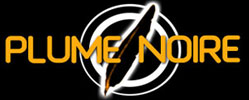
|
Django 2: Django Strikes Again review
:. Director: Ted Archer
:. Starring: Franco Nero, Donald Pleasence
:. Running Time: 1:28
:. Year: 1987
:. Country: Italy/Spain
|
In Django Strikes Again, the only official sequel of Corbucci's famous film, Franco Nero returns as Django who, now a sign of the times, resembles a cross between Keoma and Rambo more than the original Django. Shot entirely in Colombia and inspired by various genres, the result is a rather strange mixture, a sort of bad B-movie somewhere between a western, war and art house film.
More than twenty years later, Franco Nero has aged along with his character. The "pistolero" has retired, swapping his machine-gun for a monk's robe. But when his daughter is kidnapped by a slavetrader, he must go back to his old ways.
While Django influenced dozens of movies, this time it's the western's turn to take inspiration from Rambo II, a hint of 80's Italian cinema craze for that genre. Covered with belts of ammunition, he spends the majority of film shooting everybody up with his faithful machine-gun. Curiously, Nero seems also to have molted with the age into Keoma, with his hippie look as well as the film ending clearly referring to Enzo G Castellari's film.
But most astonishing is certainly the art house feel of the picture. The boat going down the river, the jungle and the desire to maintain a refined way of life far from civilization bow to Werner Herzog cinema—particularly Aguirre and the Wrath of God & Fitzcarraldo—as well as Heart of Darkness and Apocalypse Now. One is obviously far from the depth of these works, but the presence of famous actors such as Donald Pleasance reinforces European cinematic aspirations.
Django Strikes Again is, contrary to its predecessor, not stripped of sexual connotations, and tackles sadomasochism and child prostitution.
The western also refers, with certain derision, to horror cinema. Django clearly symbolizes death, from his disguise as the reaper to the hearse and—of course—the coffin.
In the end, Django 2 hasn't that much in common with the original and isn't worthwhile except for the presence of the always gloomy Franco Nero.
Fred Thom

 Django Review Django Review
 Italian Western Reviews Italian Western Reviews
 Cult Cinema Reviews 2012 - present Cult Cinema Reviews 2012 - present
 Cult Films: 1998 - 2011 Reviews Cult Films: 1998 - 2011 Reviews
|
|


